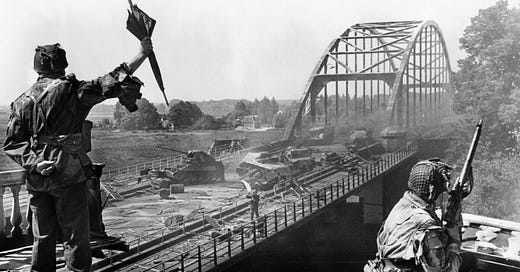The Army is looking at restructuring and re-equipping its brigades:
A series of experiments with available technology and new unit configurations being tested in Louisiana will shape the future of brigade combat teams and how they deploy to tomorrow’s fights.
The units involved are interesting:
[In addition to 2nd Brigade, 101st Airborne Division,] the Hawaii-stationed 2nd Brigade, 25th Infantry Division and the Fort Drum, New York-based 3rd Brigade, 10th Mountain Division are in earlier stages of developing such tech, with combat training center rotations planned for later this year and early 2025.
These are all leg infantry divisions, although the 101st moves with helicopters into battle. I’m more interested in what this effort says about armored brigades. I’ll watch for that.
This is part of moving from Brigade Combat Teams (BCTs) that could operate independently with more combat and support capabilities to brigades focused on fighting, with other needed capabilities moved back to the division:
Many assets formerly part of the brigade-centric fight are now going to be the division level, which Army leaders say will lighten the operational burden on brigades, freeing them to do what brigades are supposed to do: destroy things.
The BCT was good for rotating units through Iraq and Afghanistan where there were no enemy big units to fight.
The brigades also want to stop being missile magnets with large, emitting, hard-to-move command posts that beg the enemy to strike them.
This aspect of the 101st exercise makes me want to change my armor:
Sylvia said the division command elements of the Fort Campbell brigade performed mobile strike missions requiring 76 aircraft to haul more than 2,000 soldiers and 252 pieces of equipment across more than 500 miles on two avenues of approach. That maneuver necessitated at least two refueling points before troops hit the ground at 14 different landing zones.
Another 700 soldiers were needed to manage the forward area refueling points along the route from Fort Campbell to Fort Johnson, he said.
The 500-mile mark is key, Sylvia added. If the Army can strike from that distance, they can strike nearly any important feature of Russia, China, Iran or North Korea from regional installations.
We really think we can move units by helicopter into enemy territory guarded by modern air defense weapons? Really? When attack helicopters that can shoot back have trouble doing that? A lot of moving parts have to work right to pave a path into an enemy’s rear across their front line and then make sure the armored ground forces make it to the surrounded airheads in time to exploit the air assault without being a “bridge too far.”
On a seemingly minor but significant issue, I have issues with the infantry squad vehicle concept that the 101st is testing. One more thing to airlift. I say make a choice. Are you leg infantry or motorized? Blending the difference just means you can’t be either one effectively.
I just hope these exercises are designed to test operating concepts and organization rather than designed to validate what was decided.
The article has a nice list of subordinate units in pre-2004 divisions, the war on terror divisions that look like they have fewer capabilities but had support elements split among the brigades, and the projected division design for 2030.




